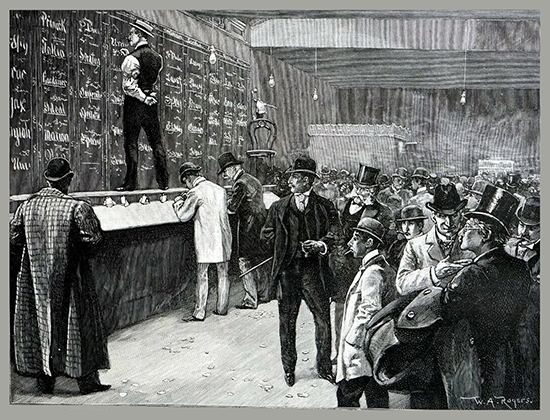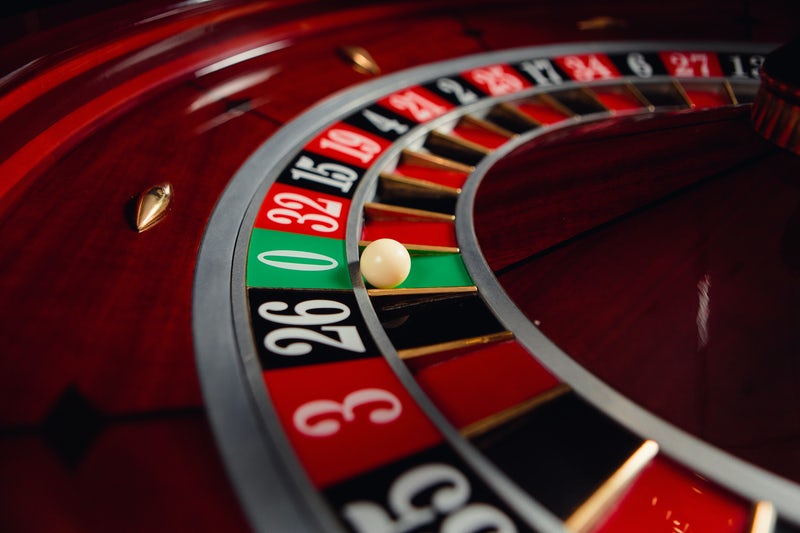The Realm of Gambling
A whole lot of people got to get up real early and do a whole lot of work so I could place that wager, it's about connecting to those winning energy currents that begin to peak early in the morning on race day and buzz all around us like a whirling dynamo by post time; and that's a dynamic process.

The law of large numbers
Wagering on thoroughbred horse races is a thinking person's game, one in which the players who apply skill with discipline can expect to make a profit. This is due to one of the principles of probability, referred to as the Law of Large Numbers; which provides that despite extended streaks one way or another, the frequency of events with the same likelihood of occurrence will even out over time, reverting to an expected value with enough trials or instances.
 Think of a coin flip, with a 50% probability it could land heads and 50% probability it may be tails. If one were to flip the coin eight times per day for a year, it's possible that heads might appear eight times in a row some day, in fact, heads might appear eight times in a row for eight days in a row.
Think of a coin flip, with a 50% probability it could land heads and 50% probability it may be tails. If one were to flip the coin eight times per day for a year, it's possible that heads might appear eight times in a row some day, in fact, heads might appear eight times in a row for eight days in a row.
However, the Law of Large Numbers states that approaching (365 x 8 = 2,920) flips of the coin, the results will tend towards a point of equilibrium (1,460 heads and 1,460 tails).
The principle, exploited by casinos all over the world to generate billions of dollars per year, ensures that in the long run the house always wins; as it guarantees stable long-term results for the averages of random events. For example, if a game of roulette pays at 35:1 odds, yet there are 38 (numbers 1-36, 0, 00) possible events for players to wager upon; then the house owns an advantage of 3/38, which translates to around 7.89%.
 Consequently, even if the casino loses money on a single spin of the wheel, its earnings will move towards a predictable percentage over time with every spin. The parameters of the game will overcome any winning streak and at the end of the year, the casino can expect to earn no less than 7.89% of its roulette handle in profit.
Consequently, even if the casino loses money on a single spin of the wheel, its earnings will move towards a predictable percentage over time with every spin. The parameters of the game will overcome any winning streak and at the end of the year, the casino can expect to earn no less than 7.89% of its roulette handle in profit.
Similarly, a horse player can employ the Law of Large Numbers to some advantage over time but in order to be successful, the player must be in possession of:
1) Reliable information as to the true win probability of each horse in every race;
2) An effective wagering plan designed to build a bankroll by placing strictly WIN bets;
3) A tangible advantage to capitalize on over the long term;
Then, simply play the legitimate win contender with the highest win probability in every race, bet to WIN, whenever said contender is offered on the tote board at overlaid odds, fair odds, or odds greater than the wager bifurcation point; in the alternative, whenever a contender's odds reach the bifurcation point, pass the race.
The Favorite-Longshot Bias
Betting odds provide biased estimates as to the probability of a horse winning. In other words, every day at thoroughbred racetracks all over America, longshots are systematically overbet while favorites are consistently underbet.
Known as the favorite-longshot bias, studies have attributed this tendency to bet against the favorite, which is common among public bettors; to either risk lovers or those who are simply incorrectly informed as to the true win probability of a horse.
This well documented fact represents an important deviation because it creates a margin of error between the true probability of a horse winning and the win probability estimated by crowd consensus as reflected by the odds on the tote board.
The consensus of the crowd is to some degree in error when it comes to win probability, and this creates an opportunity for a skilled player to capitalize on that error; with methodical play, discipline and a well thought out plan, utilizing the Law of Large Numbers to create wealth over time in the same manner as casinos.
Data Driven Decision Making
Probability theory is essential to activities involving quantitative analysis of data and complex systems given only partial knowledge of their state, such as in a horse race.
Subjective Probability
The win probability reflected by the odds on the tote board is of a subjective nature, which is to say, the collective decision making process involved in reaching the equilibrium point of public concensus is largeley heuristic (human).
Wherein a great majority of players may utilize some method of data analysis, yet the decision is largely based on a person's estimate or intuition; for instance, a belief that since the favorite has won in the last three races, a longshot must win this race (the gambler's fallacy).
Objective Probability
By contrast, objective probabilities are a more accurate way to determine the probability of a given outcome, the decision making process is based upon recorded observations or a history of collected data.
Accomplished by establishing some prior probability, which is then updated to a posterior probability in the light of new, relevant data.
Broadly speaking, an objective view that probability can be interpreted as an extension of logic.
An objective probability will examine past data and use mathematical equations involving the data to determine the likelihood of an event.
We refer to the method described herein for wagering on horse races as parimutuel investment for two reasons:
(1) The decision making process is non-hueristic, but rather, based upon an objective probability which is supported by data.
An algorithmset determines the contender with the highest probability of winning together with its fair odds and wager bifurcation point.
The player either bets to WIN at odds which are greater than the bifurcation point, or else, passes any race in which the odds reach the bifurcation point; the human element is effectively replaced with a random (stochastic) process.
(2) A spin of the wheel is inconsequential. Allowing the data to decide provides many advantages but most importantly, it removes the speculation, carrying the player out of the gambling realm.
To a paradigm where objective probability tends toward an expected value or point of equilibrium.
The player is no longer concerned about the outcome of any single race, methodically playing the most probable winner in every race; to attain an expected rate of return, as the probabilities converge to their expected value over time.
CU@the$Window!


Comments powered by https://www.clockerscorner.com